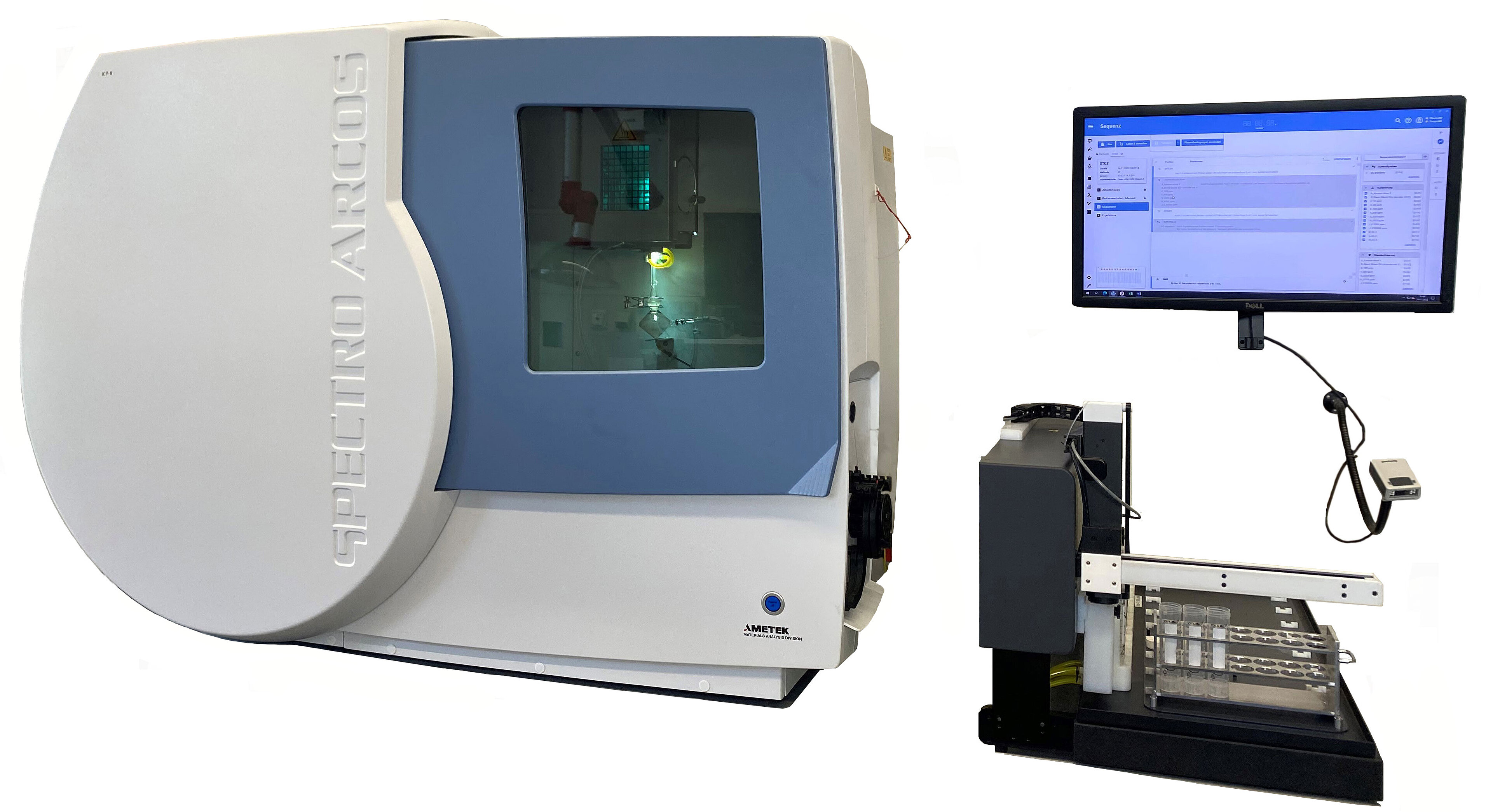
| OELCHECK test instrument: | Spectro Arcos ICP-OES |
| Sample quantity: | 3 ml |
| Unit: | mg/kg (1,000 mg/kg = 1,000 ppm = 0.1% by weight) |
| Test result: | aluminum, barium, lead, boron, chromium, iron, potassium, calcium, copper, magnesium, manganese, molybdenum, sodium, nickel, phosphorus, sulphur, silicon, zinc, tin |
| Result range: | 0 - 30,000 ppm |
| Analysis for: | all oils |
| Brief description: | First of all, the oil samples must be diluted. 1 ml of the sample is taken from the sample bottles in the sample tray using a "diluter" and is diluted in a 1:10 ratio with kerosene before being poured into a test tube. The samples are stirred thoroughly in a sample changer, before being pumped into the nebuliser with a peristaltic pump. They are then atomised with an argon flow. The aerosol then enters a cyclone chamber where the large drops are removed. The aerosol, now prepared, enters the plasma, a mixture of atoms, ions and electrons. The temperature is approx. 10,000 °C. This extremely hot plasma provides the energy to stimulate the individual elements. The resulting radiation emitted, which has a characteristic wavelength for each individual element, is spread out spectrally and detected with a CCD chip. This allows an entire emission spectrum to be absorbed. |
| Statement: | The ICP procedure can identify over 30 wear metals, contaminants and additives with an optimum detection limit. The wear metals present in the oil are important sources of data. Their presence allows direct conclusions to be drawn regarding wear to parts or rather machinery elements from which the particles might originate. In that case, it is not significant whether the wear is corrosive or mechanical. |
| Underlying test standard: | DIN 51399-1, ASTM D5185 |